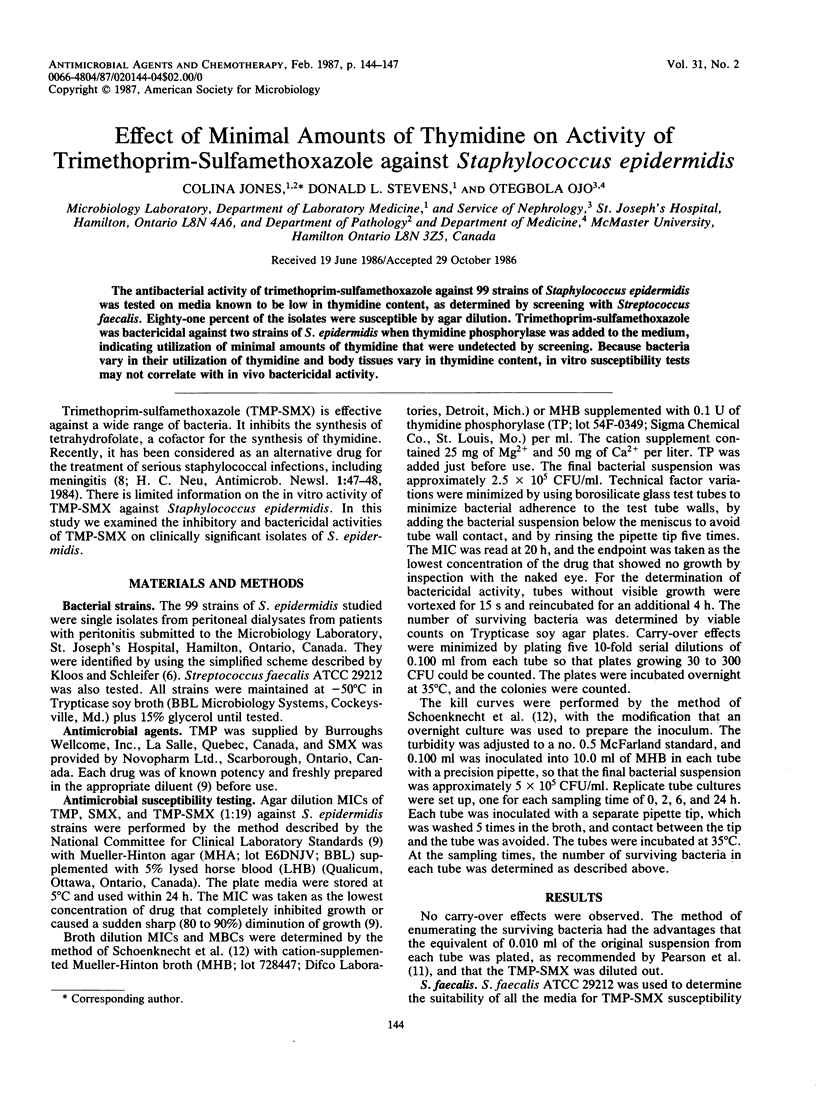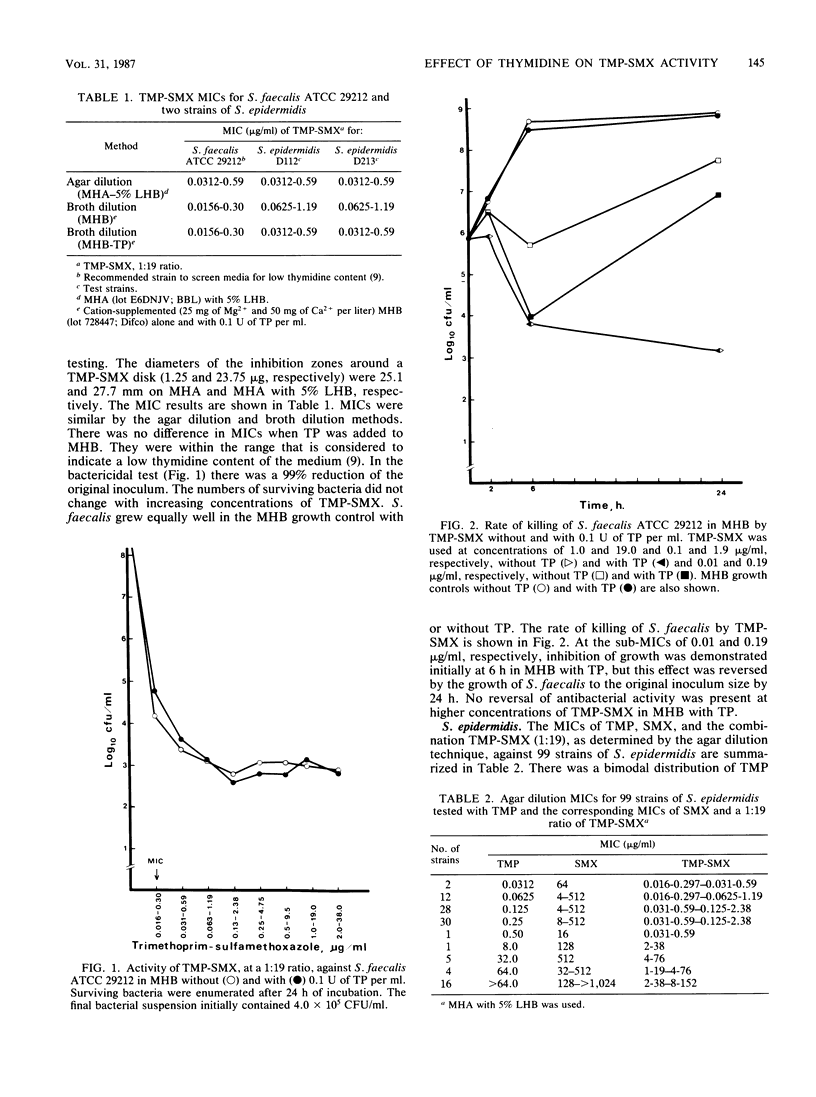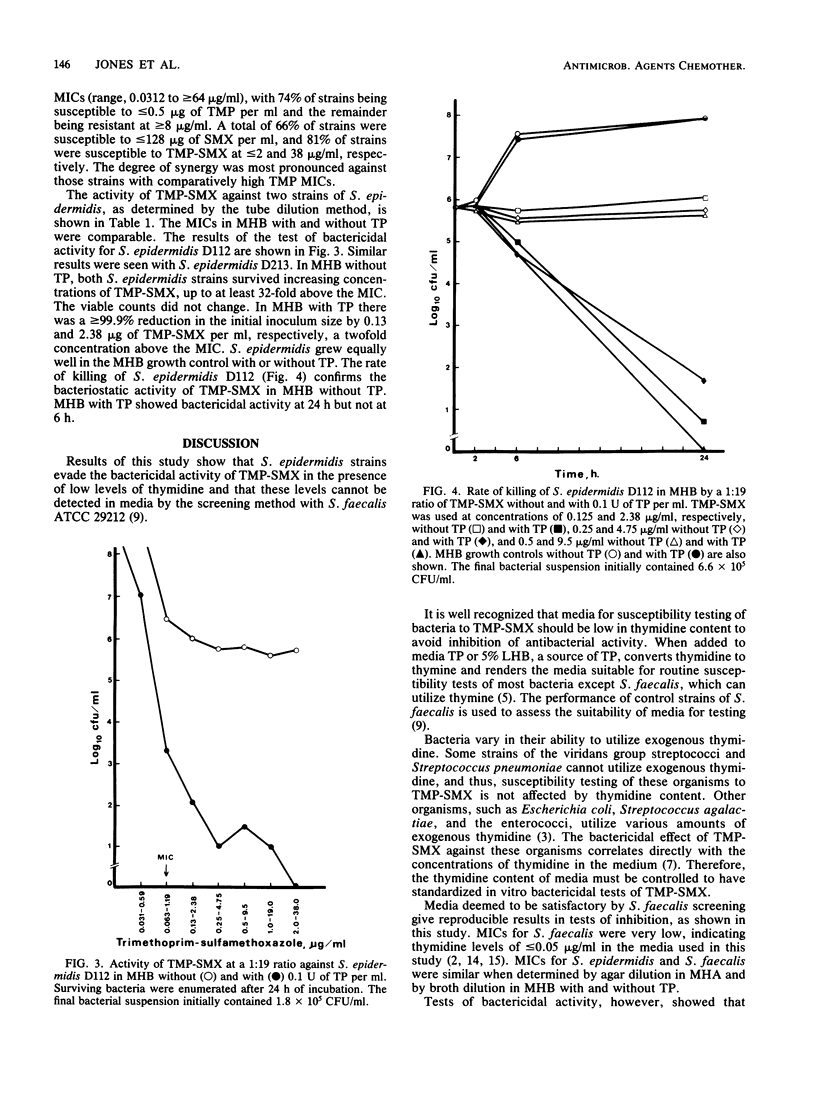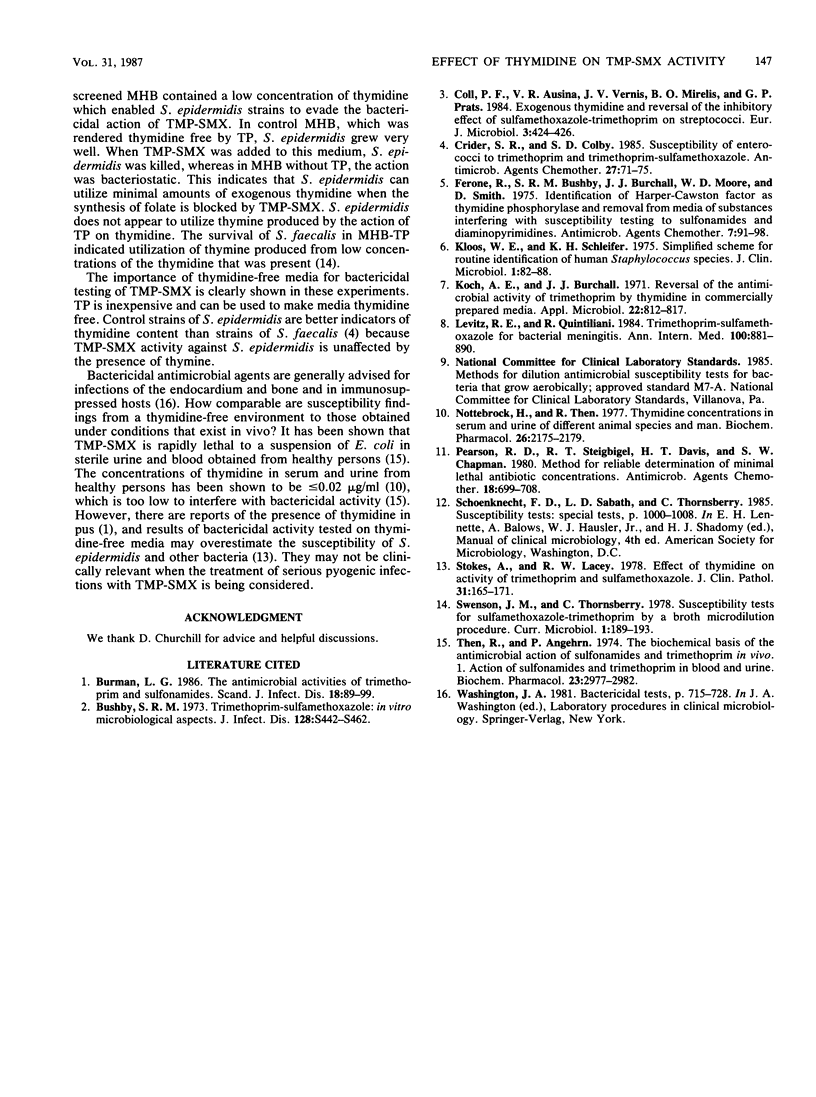Abstract
The antibacterial activity of trimethoprim-sulfamethoxazole against 99 strains of Staphylococcus epidermidis was tested on media known to be low in thymidine content, as determined by screening with Streptococcus faecalis. Eighty-one percent of the isolates were susceptible by agar dilution. Trimethoprim-sulfamethoxazole was bactericidal against two strains of S. epidermidis when thymidine phosphorylase was added to the medium, indicating utilization of minimal amounts of thymidine that were undetected by screening. Because bacteria vary in their utilization of thymidine and body tissues vary in thymidine content, in vitro susceptibility tests may not correlate with in vivo bactericidal activity.
Full text
PDF



Selected References
These references are in PubMed. This may not be the complete list of references from this article.
- Burman L. G. Significance of the sulfonamide component for the clinical efficacy of trimethoprim-sulfonamide combinations. Scand J Infect Dis. 1986;18(2):89–99. doi: 10.3109/00365548609032313. [DOI] [PubMed] [Google Scholar]
- Coll P. F., Ausina V. R., Vernis J. V., Mirelis B. O., Prats G. P. Exogenous thymidine and reversal of the inhibitory effect of sulfamethoxazole-trimethoprim on streptococci. Eur J Clin Microbiol. 1984 Oct;3(5):424–426. doi: 10.1007/BF02017363. [DOI] [PubMed] [Google Scholar]
- Crider S. R., Colby S. D. Susceptibility of enterococci to trimethoprim and trimethoprim-sulfamethoxazole. Antimicrob Agents Chemother. 1985 Jan;27(1):71–75. doi: 10.1128/aac.27.1.71. [DOI] [PMC free article] [PubMed] [Google Scholar]
- Ferone R., Bushby S. R., Burchall J. J., Moore W. D., Smith D. Identification of Harper-Cawston factor as thymidine phosphorylase and removal from media of substances interfering with susceptibility testing to sulfonamides and diaminopyrimidines. Antimicrob Agents Chemother. 1975 Jan;7(1):91–98. doi: 10.1128/aac.7.1.91. [DOI] [PMC free article] [PubMed] [Google Scholar]
- Kloos W. E., Schleifer K. H. Simplified scheme for routine identification of human Staphylococcus species. J Clin Microbiol. 1975 Jan;1(1):82–88. doi: 10.1128/jcm.1.1.82-88.1975. [DOI] [PMC free article] [PubMed] [Google Scholar]
- Koch A. E., Burchall J. J. Reversal of the antimicrobial activity of trimethoprim by thymidine in commercially prepared media. Appl Microbiol. 1971 Nov;22(5):812–817. doi: 10.1128/am.22.5.812-817.1971. [DOI] [PMC free article] [PubMed] [Google Scholar]
- Levitz R. E., Quintiliani R. Trimethoprim-sulfamethoxazole for bacterial meningitis. Ann Intern Med. 1984 Jun;100(6):881–890. doi: 10.7326/0003-4819-100-6-881. [DOI] [PubMed] [Google Scholar]
- Nottebrock H., Then R. Thymidine concentrations in serum and urine of different animal species and man. Biochem Pharmacol. 1977 Nov 15;26(22):2175–2179. doi: 10.1016/0006-2952(77)90271-4. [DOI] [PubMed] [Google Scholar]
- Pearson R. D., Steigbigel R. T., Davis H. T., Chapman S. W. Method of reliable determination of minimal lethal antibiotic concentrations. Antimicrob Agents Chemother. 1980 Nov;18(5):699–708. doi: 10.1128/aac.18.5.699. [DOI] [PMC free article] [PubMed] [Google Scholar]
- Stokes A., Lacey R. W. Effect of thymidine on activity of trimethoprim and sulphamethoxazole. J Clin Pathol. 1978 Feb;31(2):165–171. doi: 10.1136/jcp.31.2.165. [DOI] [PMC free article] [PubMed] [Google Scholar]
- Then R., Angehrn P. The biochemical basis of the antimicrobial action of sulfonamides and trimethoprim in vivo--I. Action of sulfonamides and trimethoprim in blood and urine. Biochem Pharmacol. 1974 Nov 1;23(21):2977–2982. doi: 10.1016/0006-2952(74)90272-x. [DOI] [PubMed] [Google Scholar]


